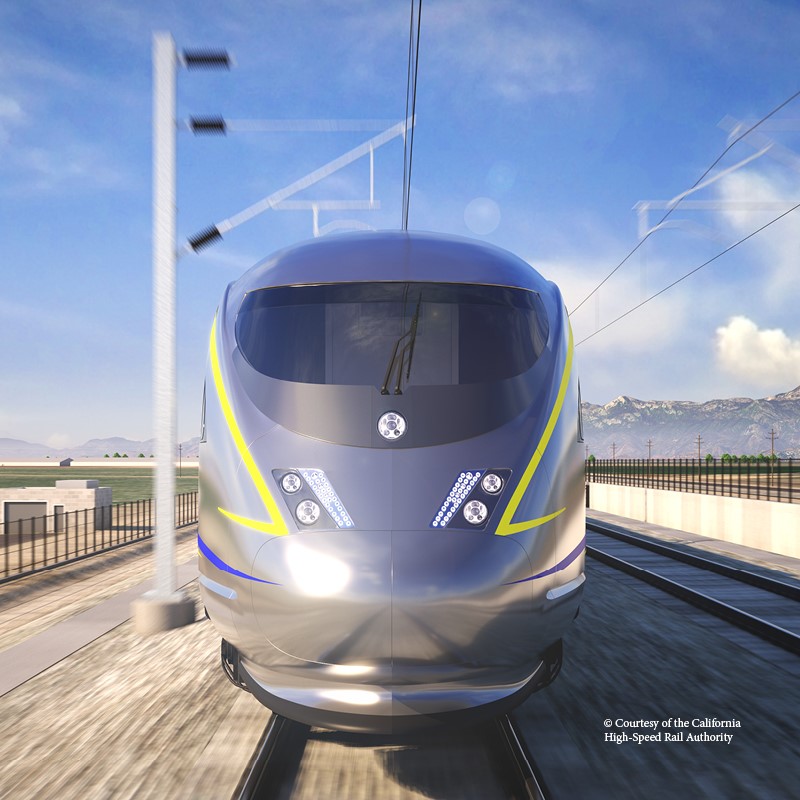Critics say the troubled project should be abandoned. They correctly point out that incurring sunk costs is a better outcome than continuing to spend tens of billions on a dream that is unlikely to be completed, and if it is, won’t be anything like the modern system promised to voters in 2008.
But there are headstrong defenders who refuse to give up. Gov. Gavin Newsom, for instance, bragged last month that “we’re now in the track-laying phase” of “building America’s only high-speed rail.” The governor was similarly upbeat in January, when he led a spike-driving public relations show in Kern County. It was, he said, a “sacred moment.”
What followed about six months later should have been the end of the California “bullet train.”
The Trump administration cancelled $4 billion in federal funding. The state responded by filing a prayer for relief lawsuit in July, asking the court to “enter a judgment setting aside the termination decision.”
Earlier this month, the state and the Federal Railroad Administration, which had terminated the funds, reached an agreement for the $4 billion to be placed in a legal trust until the court makes a ruling.
Democratic Sen. Dave Cortese, chair of the Senate Transportation Committee, “said the agreement is good news for the project,” CapRadio reports. So confident is he that the train will be completed, Cortese has introduced a bill his office says will “advance major economic opportunities connected to the high-speed rail project.”
But a few days before the agreement was announced, columnist Joe Matthews argued that “President Donald Trump just gave Californians a chance to save high-speed rail” by holding back the $4 billion. In his thinking, Trump’s opposition to the rail caused forces to rally behind the project, giving it “a new lease on life” because Trump has a “nasty way” about him that makes everyone take a contrary position.
Maybe he’s right. Former state senator Quentin Kopp, who chaired the California High-Speed Rail Authority and wrote the bill that created the High-Speed Rail Authority before becoming a critic, recently noted that while he was San Franciso’s mayor, Newsom opposed the project because “the then L.A. mayor, not him, was featured in a video made to inform Californians of the nature of the project.” But “now, because Trump belittles it, our governor is a lively proponent!”
So no matter what happens, the see-no-debacle defenders are going to find some sliver of hope to hang on to, no matter how thin it is, no matter how conflicting the developments might be. Apparently, setbacks are actually signs of progress.
This is not the definition of insanity that Einstein is said to have warned us about. But it is a bit irrational.
Kerry Jackson is the William Clement Fellow in California Reform at the Pacific Research Institute and co-author of The California Left Coast Survivor’s Guide.
(Image credit: California High Speed Rail Authority)

